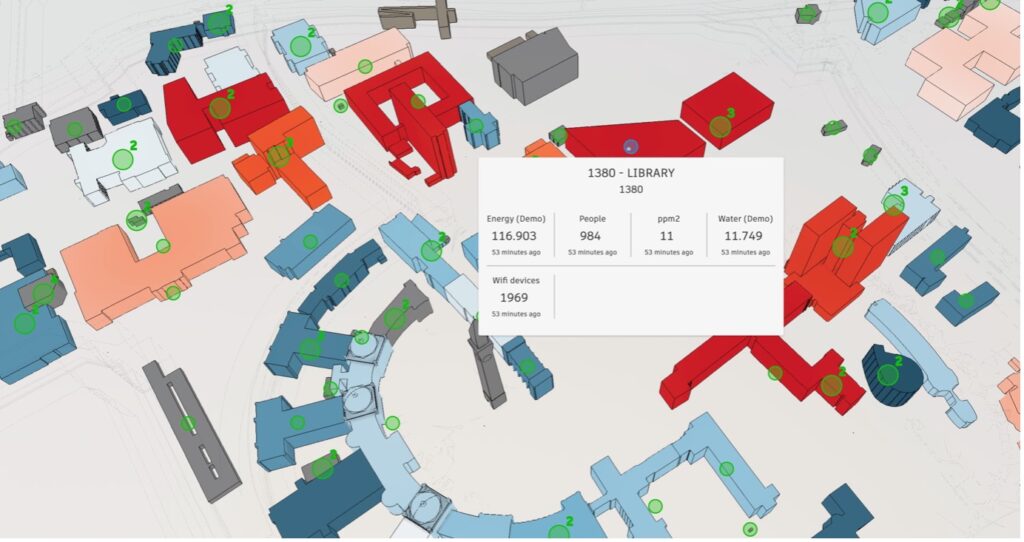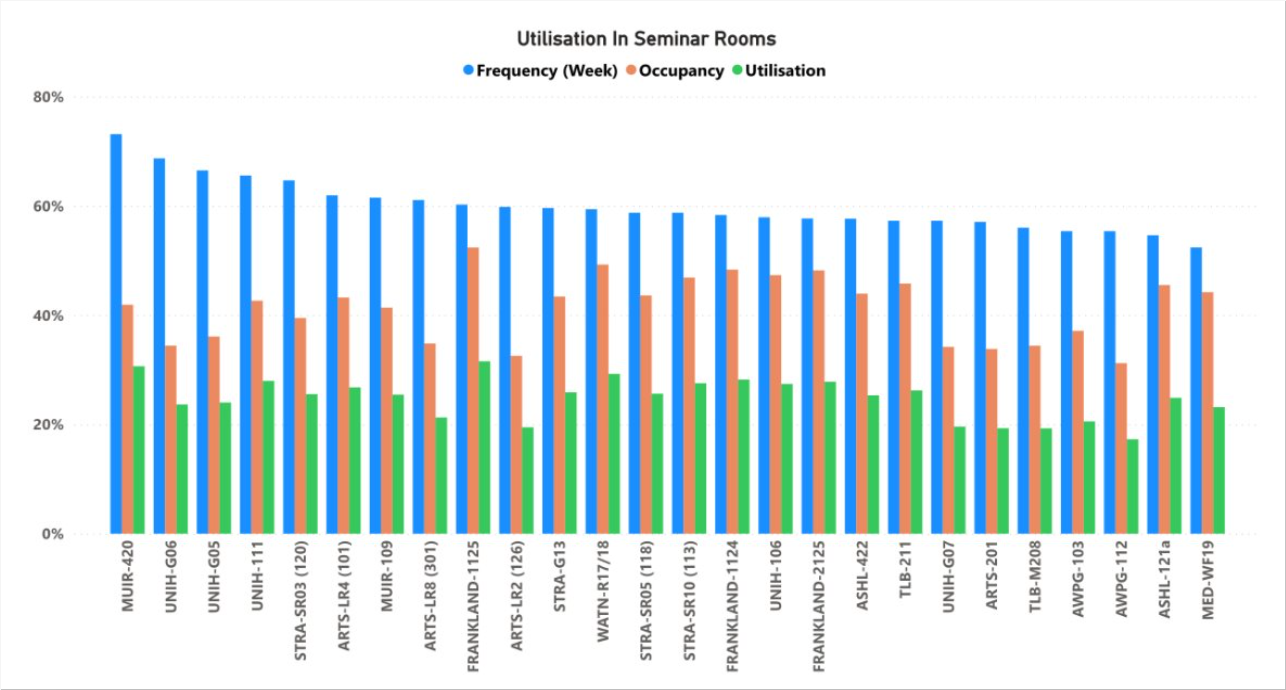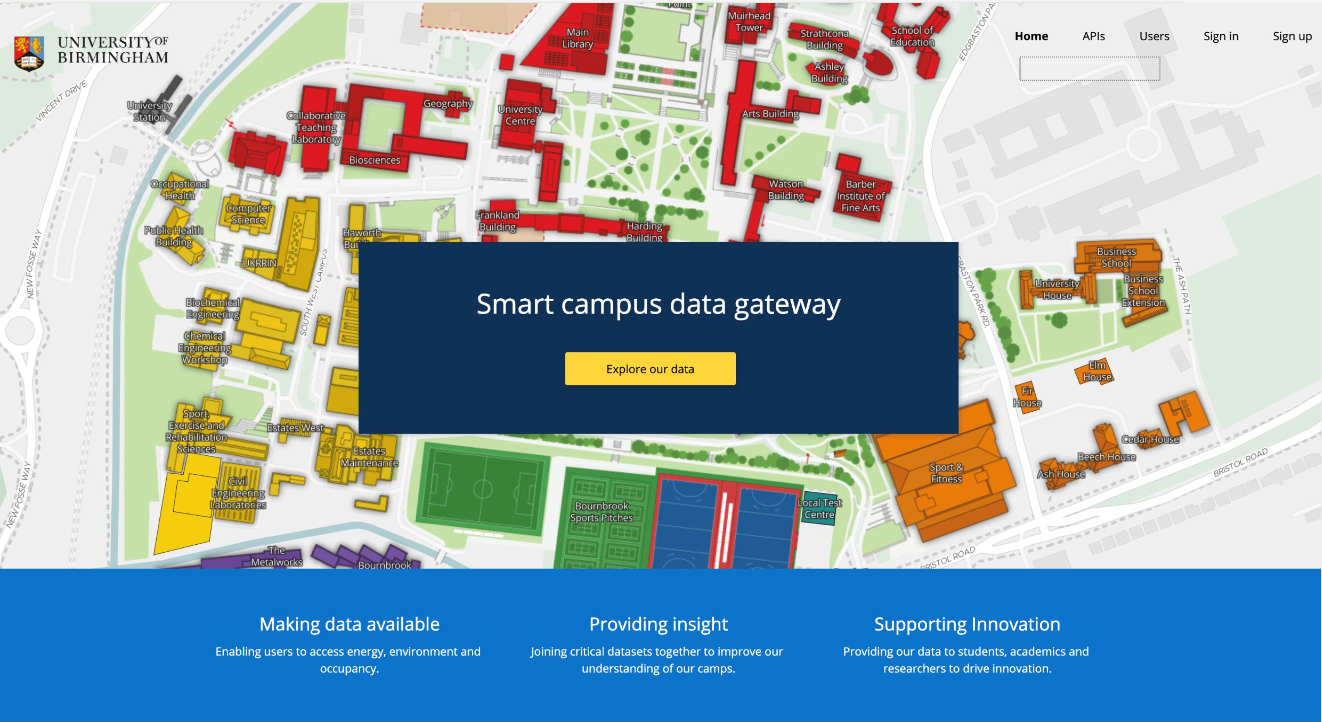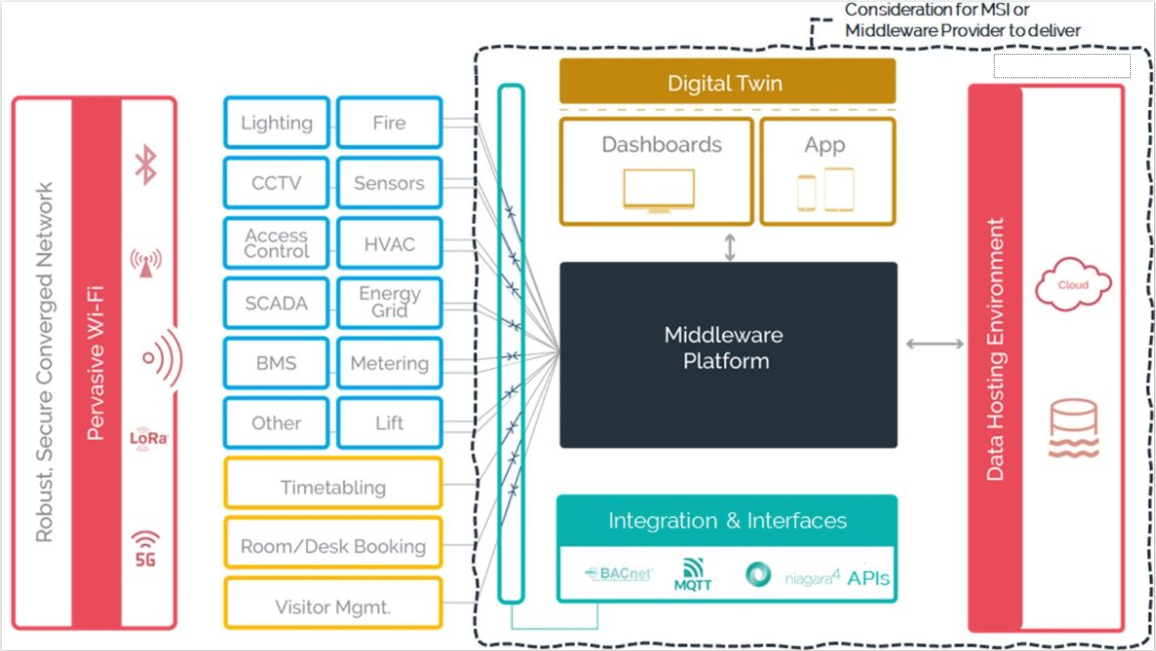A smart campus is a university campus that leverages the data generated by advanced digital, networking, and Internet of Things (IoT) technologies to improve campus operations, support sustainability, and potentially enhance the user experience.
Over the last decade, the university has invested significantly in its physical campus with the construction and upgrade of a significant number of buildings and spaces across the estate. New buildings or those built within the last ten years now contain significantly more software and digital technologies that can provide insights into the buildings’ use, which could enable new services to be created for building users and more operations to be automated.
Working in collaboration, the IT Innovation Team, IT Business Partnering, and the Estates team have been exploring the potential opportunities that might exist in this new data-rich environment.
What are the potential benefits of using this data?
Whilst there are many potential benefits and services that could be developed from this new data-rich environment, the focus at Birmingham has been on exploring the following:
| Space Utilisation | Adjusting, repurposing, or closing spaces based on historical occupancy to avoid the need for new buildings. |
| Presence-based Environmental Control | Automatically adjusting building environments (lighting, temperature, etc.) using real-time, anonymous sensor data for efficiency and comfort. |
| Energy Optimization | Managing energy use and improving efficiency by analyzing real-time and historical data, generating energy reports, and optimizing building systems. |
| Utilities Forecasting | Using data analysis and machine learning to predict utility costs and optimize space usage based on past data. |
| Predictive Maintenance | Anticipating maintenance needs using historical and real-time data to schedule services with minimal disruption. |
| Operational Digital Twin of Campus | Creating a digital model of the campus using building data to reduce operational costs and environmental impact. |
| Smart Campus Data Gateway | Building a system for secure and easy access to building data, supporting and eco-system where others can use the data to innovate. |
Where is the data coming from?
Whilst there are multiple systems and services that produce valuable insights, some of the most common data-producing platforms include:
| Technology | Description |
| Building Management Systems (BMS) | A system that controls building functions like heating, cooling, and security, and shares data with other systems to improve decision-making. |
| Wireless Networks | Essential for collecting real-time data on space usage and occupancy through sensors and IoT devices, aiding in efficient space management. |
| Access Control | A unified system using ID cards for secure access, providing valuable data on space usage and occupancy, especially in high-demand areas, for better management. |
Smart campus – proof of concepts
A university digital twin
The team created a prototype digital twin by combining 3D models, data APIs, and cloud services. This allows the university to easily understand its space and energy use in near real-time, in ways it couldn’t before.

Data-driven space analysis
By integrating hard-to-access datasets with our modern data warehouse, the university can now understand its most important and costly spaces. This reveals that, although it seems like there isn’t enough space, the reality is we can use the existing space more efficiently.

Developing the smart campus API economy
Finding ways to share smart campus data so others can create new uses for it. By tapping into the collective intelligence on campus, we aim to make the data more useful through user-friendly data APIs.

How do you manage all this data?
When institutions begin to develop the technical integration architecture for a smart campus, they often mistakenly believe they are starting from scratch. However, we think it’s important to remember that many institutions have already been updating their data and integration systems to handle complex data in standard business operations.
Many technologies being integrated on a smart campus, like Building Management Systems (BMS), use industry-wide modern standards and protocols, such as IP networking, MQTT, and HTTP, which are already widely used and understood in other core business.

Technologies commonly used at universities for data integration and sharing are also key for managing smart campus data. These technologies are:
- Data warehouse technology (e.g., Snowflake, Azure Synapse, Amazon Redshift)
- API management and gateways
- Event-based integration systems
- Serverless computing (e.g., Azure Functions, AWS Lambda)
- Low code integration platforms (e.g., Azure Logic Apps, AWS Step Functions)
Together, they are known as the smart campus middleware.
So, what did we prove?
Over the past two years, the Estates and IT departments have tested several ‘Smart Campus’ projects. These efforts have led to data-informed decisions for 2023/2024, including:
- Temporarily closing buildings seasonally.
- Shutting down buildings for the long term.
- Conducting further studies for better building and space usage.
- Implementing minor, data-driven changes in campus buildings.
- Engaging a diverse group of stakeholders in using and discussing data.
- Seeking data to help with planning, especially for computer labs and scheduling.
Together, these actions are expected to save £1 million.
What’s next?
After successfully demonstrating the potential of the data generated on our campus to improve space usage, energy usage and ultimately save money. The university is now considering the formalisation of a smart campus strategy that we hope will result in more investment to explore and leverage the data in this space.
